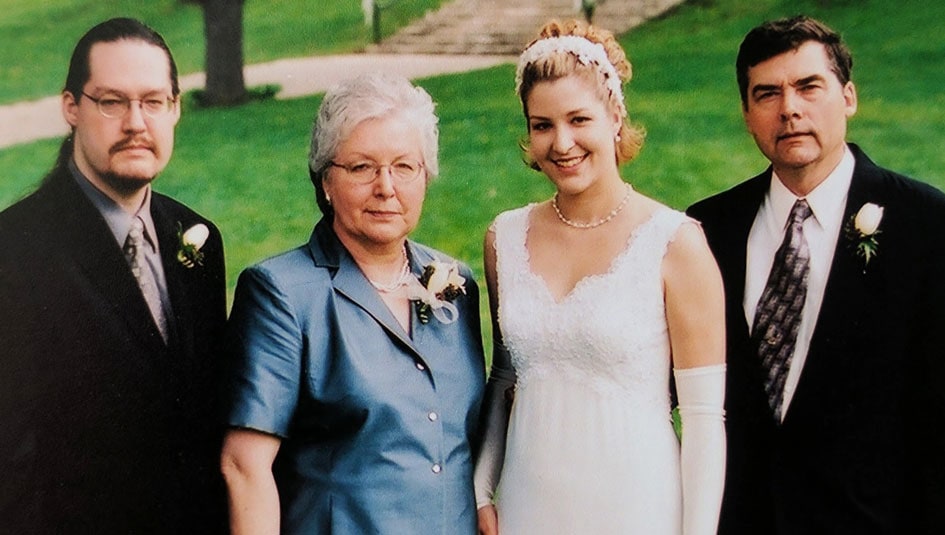All I Needed to Know About T1D I Learned From My Mom and Brother

My diagnosis of type 1 diabetes came late in life at age 25. I had completed college, was starting my career, and was newly married. Tears were shed as the gravity of the diagnosis sunk in, but the diagnosis itself was not a surprise.
That’s because I had grown up with Type 1 diabetes in my family. Both my mom and my older brother were diagnosed with it when I was a child. Years later, I realized that watching them handle the condition has shaped how I live with diabetes.
Read “Why My Family Doesn’t Use Nightscout.”
My mom was diagnosed in 1981, when she was 38 and I was 4. Photos from that time show how impossibly skinny she was at the time – gaunt and bony. In hindsight, there were suspicions that something was wrong months earlier; she might even have had Type 1 since the time I was born.
As a four-year-old, I didn’t know what was happening, and I was terrified. When my mom returned from the hospital after her diagnosis, I remember standing in our tiny, sunlit kitchen, asking if we could still drink from the same glass. I wondered if I could catch diabetes like a cold. I felt that everything was changing and I just wanted to curl up into her arms. She comforted me with the assurance that life would continue as normally as possible.
Read “Why Children with Type 1 Might Lie About Their Blood Sugar Levels.”
For the most part, she was correct; life returned to a modified version of normal. Mom never made diabetes a big deal; It was just another aspect of life. I never heard her complain about it once. Following the “exchange” diet at that time, she ate what she needed, tested her blood glucose, and took her insulin. She never hid diabetes – she was public with her insulin injections and blood sugar testing, yet discreet when necessary. She discussed diabetes with her junior high students and others and we did JDRF walks as a family.
In 1987, my older brother was also diagnosed with Type 1 at age 13. I was more scared for him than for what his diagnosis might have meant for me. He had lost a lot of weight, and had looked so small and helpless in the hospital bed when he was diagnosed, and he was in DKA. Afterwards, although he had a tougher transition to life with diabetes, he followed our mom’s lead. He did what he needed to do to care for his health and life continued.
Shortly after my brother’s diagnosis, I was involved in a study at the University of Minnesota for siblings of people with diabetes. Researchers watched my insulin response during several glucose tolerance tests. I showed initial signs of beta cell destruction and delayed pancreatic function at age 13. This was when it began to occur to me that I might be next in line for diagnosis, but even then the thought was fleeting. I may have been in denial or maybe I just felt protected by the teenage aura of invincibility.
It wasn’t until 12 years after the study that I was officially diagnosed with Type 1 diabetes. My diagnosis didn’t come with a dramatic DKA hospitalization, as it did for my mom and brother. For me, it came after a simple blood test at my primary clinic. After a call from the nurse, I left work and returned to the clinic where I received rudimentary training and prescriptions. While it was a big adjustment, I felt like I already understood Type 1. I just had to apply what I’d seen for the last two decades to my life. Injections and blood testing quickly became my routine, and I worked with an endocrinologist to tweak insulin levels over the next few weeks.
Six weeks after my diagnosis, my husband and I traveled to Thailand. It was challenging but I knew from watching my family that diabetes didn’t have to limit me. We hiked to visit the hill tribes north of Chiang Mai and traveled by small motorboat to remote islands in the south. Since then, I’ve hiked the Inca Trail to Machu Picchu, lived internationally for seven years, traveled with suitcases full of diabetes supplies, and set up health insurance and doctor visits in foreign countries.
Looking back, our family acknowledged the many challenges that come with diabetes, but their attitude that life goes on was refreshing from others we knew who adopted an attitude of victimization. The “Woe is me – diabetes is so tragic and difficult!” and “I can’t do (blank) because of diabetes!” mindset was absent in our family, and I’m grateful for that.
Yes, Type 1 diabetes stinks. It’s incessant, incredibly serious, and brings about some very difficult days. This is not something I envisioned for myself, my mom, my brother or, potentially, for my daughters, but we work hard to manage diabetes and live the best, most positive lives that we can.
My mom, brother, and I have a kinship forged by Type 1 diabetes. We manage it differently, and that’s okay. I am grateful to them for guiding me throughout my early life and teaching me that Type 1 diabetes was something I could handle. I thank them for showing me that I was strong enough to manage diabetes, maintain a positive attitude, and enjoy life to the fullest.
Thanks for reading this Insulin Nation article. Want more Type 1 news? Subscribe here.
Have Type 2 diabetes or know someone who does? Try Type 2 Nation, our sister publication.